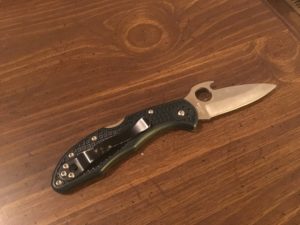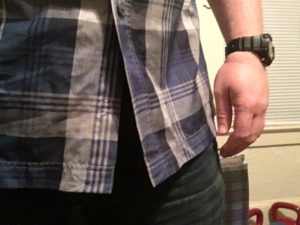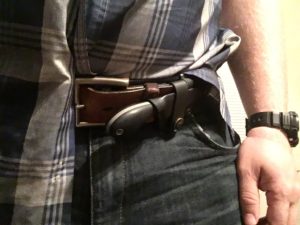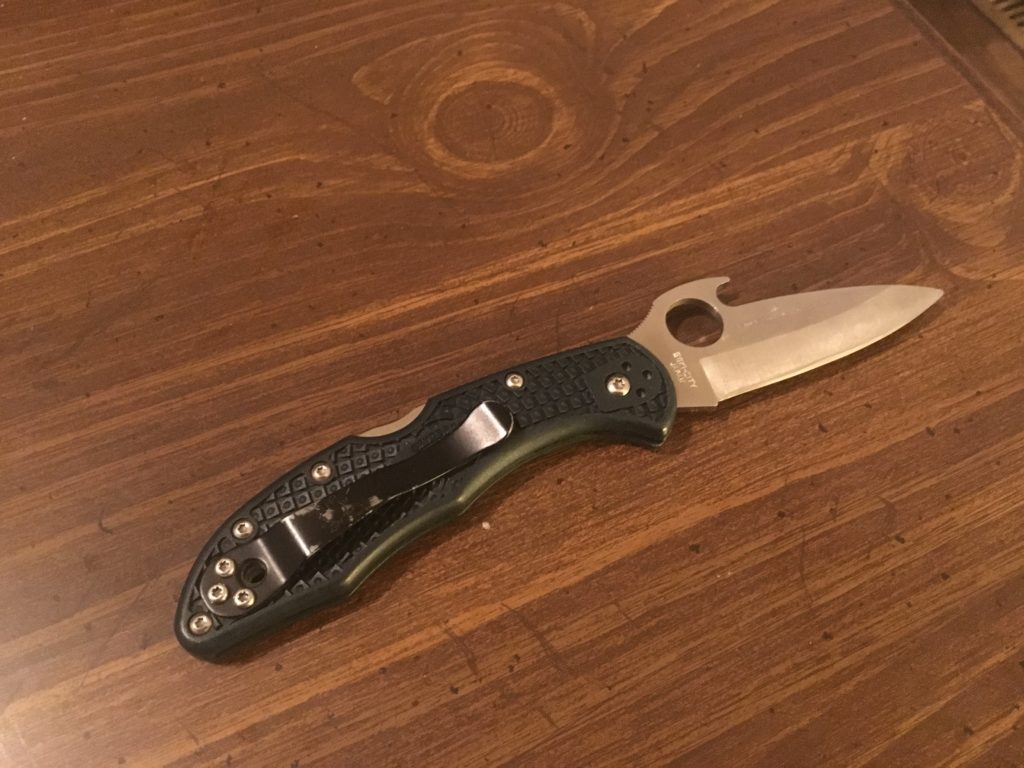Are you thinking about carrying a knife for self defense? Maybe you already do carry.
If so, there are some essential questions you need to ask yourself. This article addresses the first of four key areas of understanding you need when it comes to carrying a knife for self defense. These four key areas are based on Phil Legare’s Personal Protective Measures Level 2: Advanced Edged Weapons course.

First, can you carry legally?
Knife laws can vary greatly from state to state, and sometimes even from city to city within the same state. Some legal issues you need to consider are size, mechanism, location, intended use, and even aesthetics.
Size
Legality of a knife is sometimes determined by blade length alone. Sometimes it’s determined by overall length – butt of the handle to the tip of the blade. In some areas that length is a set number like 3.5″. In other areas, the blade can’t be longer than the width of your palm. Find out the written law in your area.
Mechanism
In some areas, spring assisted opening mechanisms are illegal. These are sometimes called “switchblades.” Maybe your area disallows fixed blade knives, but allows folding pocket knives. In terms of size and mechanism, almost anything is legal in Alabama except a large Bowie knife. Somewhere Crocodile Dundee is vowing to never visit Alabama…

Location
It’s pretty obvious that you can’t legally carry a knife on to an airplane post 9/11. But you also can’t carry in most government buildings. I once got denied access into the Jefferson County Courthouse because I had a pair of nail clippers in my pocket. Most movie theaters are also off limits.
In Japan and Australia, carrying a knife is illegal everywhere. One caveat to this is if the knife is essential equipment required for a job. Even then, there are specific conditions to do so. Can you carry at your job? Which brings us to…
Intended Use
Some knives are easy to articulate that they are for non-defensive work use. Think various cooking knives, serrated edges for cutting materials such as cardboard or rope. A skinning knife for hunting.
But these need to be congruent with the context of their use. Taking a walk around the block with an 8″ sushi knife is going to stand out. Wearing a skinning knife on your belt outside hunting season while having drinks at the sports bar with your friends may get you some odd glances. Not so much in Alabama because this is Alabama. Roll Tide!
If you carry a knife designed specifically for defensive use, you must be able to articulate why you carry that knife. So much consideration and training must be behind this articulation that it can’t be covered in this article. Maybe I’ll write about that in another post.


Aesthetics
Does your knife look simple, plain, and unassuming? Or does it look like it was designed by the Klingon Empire in order to inflict maximum damage? A “K-Bar” may be appropriate for military use by soldiers, but less so for the average everyday citizen going about a typical day.
Second, should you carry?
If we’re talking about using a knife for self defense, do you accept the responsibility that comes with it?
Not just the responsibility to use it lawfully, but do you accept the responsibility to get proper training? To maintain the equipment and your skills? Have you ever attended a course on defensive knife skills? Do you accept the moral responsibility of potentially having to take an attacker’s life in order to protect yourself or a loved one? Do you accept the responsibility of the psychological aftereffects – the look of pain in his face, the blood, the nightmares that may come? What about the responsibility to get psychological help after the fact?
Finally, why do you carry a knife?
You have to do the research, the training, and the soul searching to answer this for yourself honestly. Then, you have to be able to articulate why, based on your self defense education and training, in a logical and understandable way to someone who may ask. That could be your significant other, family, friends. But most importantly people in the legal system: police, lawyer, judge, jury.
What are your thoughts on defensive knife carry? Let us know in the comments.
